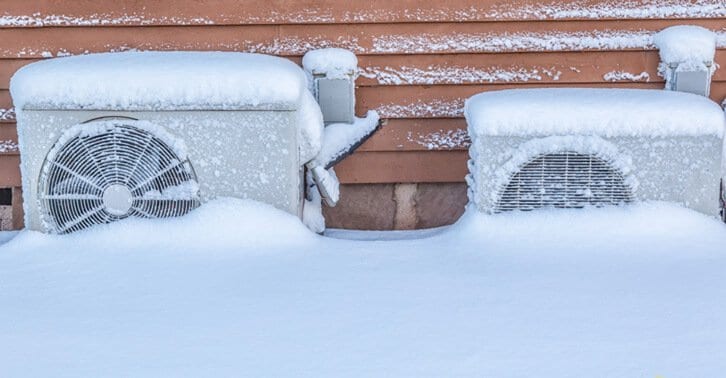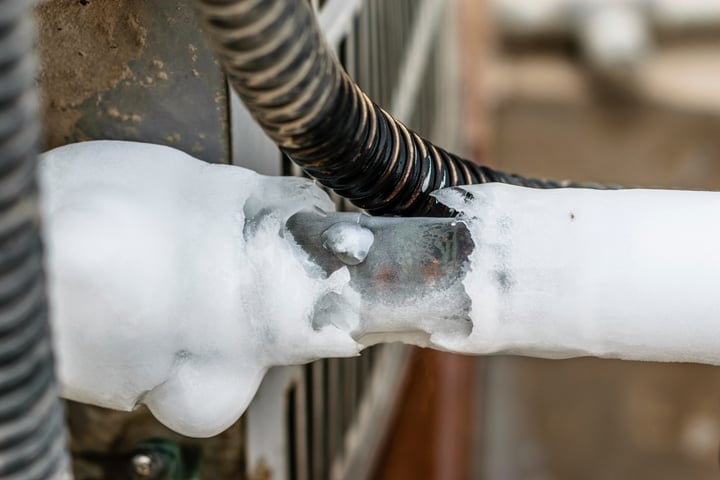Ways to Thaw Out a Frozen AC Pipe: Specialist Guidance
Ways to Thaw Out a Frozen AC Pipe: Specialist Guidance
Blog Article
Right here down the page you'll find additional superb help and advice regarding What Causes AC Pipes To Freeze?.

Introduction
Finding that your air conditioning pipe is iced up can be worrying, especially throughout hot summertime when you rely upon your air conditioning system one of the most. Comprehending what to do in such a situation is important to avoid further damage to your cooling system and guarantee your convenience indoors.
Comprehending the Causes
A number of variables can contribute to the freezing of an air conditioner pipe. Recognizing these causes can aid you deal with the problem properly.
Absence of Airflow
One usual cause of an icy AC pipeline is inadequate air movement. When the air movement over the evaporator coil is limited, it can trigger the coil to drop below freezing temperature, leading to ice development on the pipeline.
Low Refrigerant Levels
Inadequate cooling agent levels in your AC system can additionally cause a frozen pipeline. Reduced refrigerant degrees can create the stress in the system to go down, leading to the cold of moisture on the evaporator coil.
Winter Conditions
In chillier environments, freezing temperature levels outside can contribute to the cold of AC pipes. If your a/c unit is not effectively protected or if there are leakages in the ductwork, cold air can infiltrate the system, triggering the pipeline to freeze.
Dirty Air Filters
Unclean or clogged air filters can restrict air flow in your air conditioner system, leading to different concerns, including an icy pipeline. It's essential to replace or clean your air filters on a regular basis to make certain correct airflow and protect against ice build-up.
Indicators of a Frozen AC Pipe
Identifying the indicators of an icy a/c pipeline is important for punctual activity.
Minimized Airflow
If you observe a considerable decrease in air movement from your vents, it might indicate an icy pipeline.
Ice Buildup on the Pipe
Noticeable ice accumulation on the refrigerant line or the evaporator coil is a clear sign of a frozen air conditioner pipe.
Strange Sounds from the Unit
Uncommon sounds, such as hissing or gurgling, coming from your air conditioning unit can signify that there's ice present on the pipe.
Immediate Actions to Take
When confronted with a frozen AC pipe, it's necessary to act swiftly to prevent additional damages to your cooling system.
Switching off the a/c
The very first step is to switch off your ac system to stop the system from running and aggravating the issue.
Checking for Blockages
Inspect the area around the indoor unit for any obstructions that may be obstructing air flow, such as furniture or curtains.
Thawing the Pipe
You can use mild approaches like placing towels soaked in cozy water around the frozen pipe to aid thaw it gradually.
Preventive Measures
Taking preventive measures can help stay clear of future incidents of a frozen AC pipeline.
Routine Maintenance Checks
Schedule normal maintenance checks with a specialist HVAC service technician to ensure that your air conditioning system is running successfully.
Altering Air Filters
Routinely change or cleanse your air filters to avoid air movement restrictions and preserve optimum efficiency.
Insulating Exposed Pipes
If your AC pipelines are subjected to cool temperature levels, consider shielding them to avoid cold during winter season.
Looking For Professional Help
If DIY techniques fall short to fix the concern or if you're uncertain concerning how to continue, it's best to seek help from a qualified HVAC service technician.
When DIY Methods Fail
If your efforts to thaw the pipeline or address various other issues are unsuccessful, it's time to call in a professional.
Significance of Hiring a Professional HVAC Technician
A certified HVAC professional has the proficiency and tools needed to diagnose and repair issues with your AC system securely and effectively.
Conclusion
Dealing with a frozen air conditioner pipeline can be a frustrating experience, however knowing exactly how to react can aid reduce damage and recover comfort to your home. By understanding the causes, identifying the indicators, and taking prompt action, you can efficiently attend to the concern and protect against future events.
G UP? HOW TO FIX IT?
It happens all over America. And the rest of the world probably. It’s the hottest day ever and for some darn reason your AC isn’t cooling the house. You fiddle with the thermostat to try and fix the problem. Nada. All you can do now is go outside and check the AC unit. You make your way there and find your air conditioner unit is frozen! But how?
In this post we’ll cover how you can tell that your air conditioner has frozen (other than the obvious reasons), what could have caused the freeze, and some of the things you can do about your AC freezing up. And if you have a frozen heat pump condenser, read our blog about it to learn what to do! But remember, it is always best to avoid your AC freezing up with an AC tune up. And if you are moving into a home, it's critical to get HVAC inspection so that you are aware of an AC problems before you move in.
Keep reading and you may be able to fix the frozen AC yourself. If you can’t, call an HVAC specialist. If you live in Maryland, call SuperTech HVAC for AC repair. We’ll take care of it.
How Does An Air Conditioning Unit Work?
How you probably imagine an AC works is wrong. Contrary to popular belief, an AC system does not inject cool air into a building. Instead, it removes the heat from inside and transfers it outside. Cool huh? (Pun intended).There are 4 major components among the 3 stations of an air conditioning system: the evaporator coil, the compressor, the condenser, and the refrigerant – a special chemical that links everything together through a closed loop system.
Station 1:
Warm indoor air is sucked into the return vent, through a filter, and blows over the evaporator coil. The heat is absorbed into the cold refrigerant, turning it from liquid to gas. The air, which is now cool, is blown back into the home to areas that your thermostat, i.e. you, has decided.
Station 2:
The refrigerant makes its way outside the house to the compressor, which squeezes the warm refrigerant, raising its gaseous temperature even more.
Station 3:
When the super hot vapor refrigerant reaches the condenser, the last step, the heat is expelled and absorbed into the outdoor air. The refrigerant instantly cools, which changes it from gas back to liquid form. The cold liquid refrigerant is now ready to return to station 1 and repeat the process.
Is Your AC Freezing Up? Here Are The Signs:
As you may have guessed, your air conditioner unit freezing up on a hot day is not normal.
If this happens, there's no need to panic. Often the issue can be solved with a little troubleshooting. If the AC unit is left frozen for too long however, you may find yourself with a bigger problem.
First things first, how do you know your AC is frozen?
Well, the obvious sign is the ice on your refrigerant line-set pipe. Simply check between your outdoor AC unit and your home's exterior wall to see whether your AC line frozen.
You might also have a frozen evaporator coil. This one's not as easy to check. You'll need to open a panel on the indoor unit to inspect. Don't do this unless you're handy. If you aren't, call an HVAC pro like SuperTech HVAC or you may damage something in the process.

We were made aware of that editorial on How can I fix an air conditioner’s frozen pipe? through a friend on a different website. For those who enjoyed reading our blog entry if you please do not forget to pass it around. I cherish reading our article about Why Is Ice On My Outside Air Conditione.
Call Today Report this page